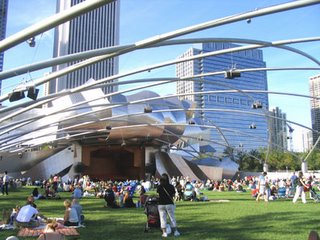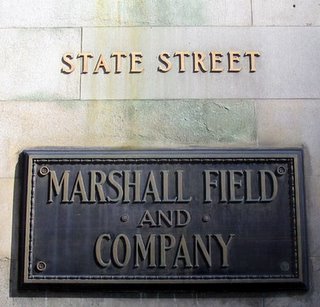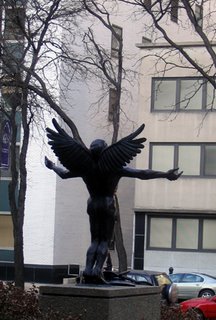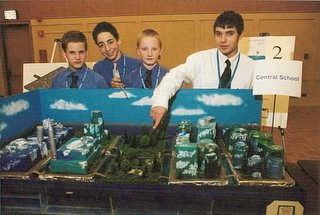
Blair Kamin has a good
story in this Sunday's Tribune on how the AIA's
2006 Regional and Urban Design Honor Award recognizing Chicago's
Millennium Park gives the biggest credit to
Skidmore Owings & Merrill, which is kind of like an giving the award for the Mona Lisa to the guy who sold Da Vinci the canvas.
SOM's original plan was competent - and embalmed - a bland regurgitation of Burnham and Bennett's original Grant Park designs from the early part of the 20th Century, which, in all fairness, was exactly what the city was looking for at the time. As Kamin points out, its not SOM but the park's project director
Edward K. Uhlir who deserves most of the credit for overseeing the transition of the park's design from derivative to spectacular. Uhlir was the ringmaster who choreographed a diverse set of powerful personalities from Cindy Pritzker to Frank Gehry to Mayor Daley to fund-raiser John Bryan to create an entirely fresh and new consideration of what a city park could be.
At a symposium at the time of the park's opening, Frank Genry, architect of the Pritzker Pavilion, the undeniable centerpiece of Millennium Park, set the record straight. "Adrian Smith (of SOM) was doing the park," Gehry related, "and he called me and asked if he would do a fish sculpture on either side of his proscenium. And I said no, I don’t do fish sculptures. And that was it. I didn’t hear from him again, and I forgot all about it. "
"And then these guys (Uhlir and company) called and came out to see me. Before they came they said it was for Grant Park, and I said I already told them I wouldn’t do the fish sculptures, and they said, no, no, we’ve got something else. They said they wanted me to design this thing in the park, a bandshell. Then I said, aw, come on, I don’t want to do a bandshell in the park . . . come all the way to Chicago to design a little bandshell. I said if you’re going to do a music thing you’ve got to make it substantial . I said if I’m going to do it, I’d like to like to design the relationship between the audience and the stage. I think that’s a magical thing when it works. They said, oh, you can do that. I said, gee, that’s great. They said, we’ll even throw in the bridge if you want to do it."
It was Uhlir's vision, direction and persistence that created what we know today as Millennium Park, not SOM.

If you want to see something interesting that SOM is actually doing, check out the press release sent out this week on Adrian Smith's entry into a competition for the proposed 69 story
Pearl River Tower in Guangzhou, China, a design concept where the building would actually produce more energy that it consumes, by directing wind into the structure's mechanical floors to power wind turbines that supply electricity for the HVAC. "This is an iconic, high-performance building that is designed in harmony with its environment," the release quotes Smith as saying. "It is a skyscraper for a new age." The competition's winner, chosen from three finalists, is expected to be named next month.


















